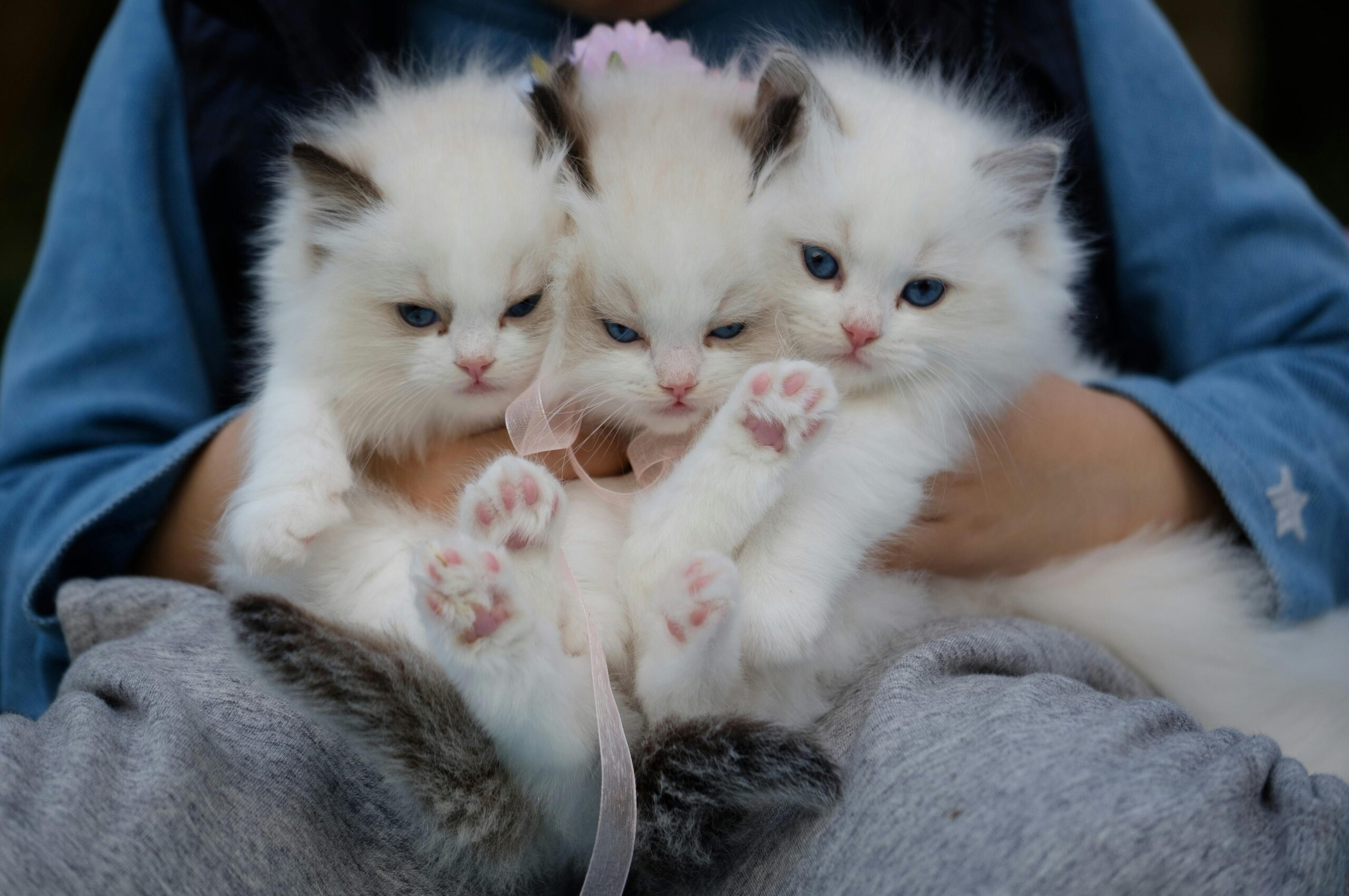Cats: they rule our couches, hijack our keyboards, and dominate the internet with fluffy finesse. Yet for all the memes and midnight zoomies, these mysterious whisker wizards still have plenty of secrets up their furry sleeves. From anatomy quirks that would impress a superhero 🦸♂️ to record-breaking feats that belong in the Guinness book, felines are a nonstop fun-fact factory.
So grab your favorite lap-warmer, settle in with a cup of cat-puccino ☕🐾, and let’s dive into 50 little-known nuggets that will make you say, “Holy hairballs—I never knew that!”
Incredible Cat Anatomy
- Rotating ears – A cat’s pinna (outer ear) can swivel about 180 degrees, powered by more than 30 tiny muscles.
- Whisker GPS – Those stiff vibrissae are precisely as wide as a cat’s body; they work like curb-feelers so cats know if they can squeeze through a gap.
- Back-to-front tongues – Microscopic, backward-facing barbs called papillae give the tongue its sandpaper feel and act like built-in combs, funneling saliva to clean fur (or strip chicken off a bone).
- Eyes built for night ops – A reflective layer called the tapetum lucidum amplifies available light up to six times, letting cats see in about one-sixth the light humans need.
- Feline floaters – Unlike most mammals, cats lack a true collarbone; that floating shoulder girdle lets them twist mid-air and land on four feet.
- Acrobatic spines – Extra-elastic discs between vertebrae give cats a “super-spine,” allowing turns of up to 180 degrees during a fall.
- Low-frequency love notes – A purr ranges from 25–150 Hz—frequencies shown to promote bone and tissue healing (yes, your cat may be a fuzzy physiotherapist).
- Fastidious feet – Cats typically have 18 toes, but polydactyl cats can sport 20–28; sailors once prized them as lucky “double-pawed” mousers at sea.
- Built-in barometer – Cats’ inner-ear vestibular system is so sensitive that some studies suggest they can detect atmospheric pressure changes before storms.
- Nose prints – Like human fingerprints, every cat’s nose has a unique pattern of bumps and ridges— a one-of-a-kind “nose ID.”
Purr-sonality & Behavior
- Head butts = ownership – When your cat bunts you, those forehead scent glands are claiming you as part of the territory.
- Slow blink – That languid, dreamy blink is friendly feline Morse code for “I trust you.” Returning the blink can strengthen your bond.
- Midnight zoomies – Cats are crepuscular (most active at dawn and dusk). The 3 a.m. hallway sprint is your indoor cat’s substitute for twilight hunting.
- Chirps and trills – House cats rarely “talk” to each other vocally; most meows and chirrups are aimed squarely at humans.
- Water fascination – Big cats like tigers love swimming, and some domestic breeds (e.g., Turkish Van) share the gene for water play.
- Tail question mark – A high tail with a hooked tip is kitty shorthand for “I’m feeling friendly—got snacks?”
- Kneading nostalgia – The “making biscuits” motion mimics nursing kittens stimulating milk flow; adult cats knead when feeling safe or claiming soft blankets.
- Random sprint → groom – Scientists call that sudden lick session after a wild dash a “displacement behavior,” a quick way to calm down.
- Elevated dining – In the wild, smaller felines drag prey uphill or into trees; your counter-surfing cat is reenacting ancient food-safety protocols.
- Box obsession – Cardboard’s insulation offers warmth, security, and a stealth vantage point—plus it absorbs scent, making any Amazon delivery smell “homey.”
Myth vs. Reality
- Cats always land on their feet (myth—not always) – The “righting reflex” is amazing, but too short a fall—or twists with no room to rotate—can spell injury.
- Milk is a treat (myth) – Most adult cats are lactose-intolerant; water wins every time.
- One human year = seven cat years (myth) – Cats mature rapidly: a one-year-old cat is roughly a 15-year-old human; after age two, add about four human years per cat year.
- Black cats bring bad luck (myth) – In Japan and Great Britain, black cats are good luck; superstition varies wildly by culture.
- Pregnant women must rehome cats (myth) – Toxoplasmosis risk is real, but simple litter-box hygiene or delegating scooping duties keeps both mom and kitty safe.
- Cats are aloof loners (mostly myth) – Felines form secure attachments; they just show affection in subtler ways than dogs.
- Whisker trimming is harmless (dangerous myth) – Cut whiskers and a cat’s navigation, balance, and mood all suffer.
- Cats can’t be trained (myth) – Clicker training works wonders for high-fives, leash walks, and vet-visit calm.
- A purring cat is always happy (myth) – Cats also purr when in pain or anxious; it can be self-soothing.
- Indoor cats don’t need exercise (myth) – They still require enrichment; think puzzle feeders, vertical shelves, and daily play sessions.
Record-Breaking & Wow-Factor Facts
- Oldest cat ever – “Creme Puff” of Austin, Texas, lived an astounding 38 years and 3 days.
- Longest jump – A cat named “Waffle” holds the Guinness title: 7 ft (213.36 cm) from standing start.
- Most toes – “Paws” the polydactyl from Minnesota boasts 28 toes, currently the world record.
- Loudest purr – “Merlin” in the UK hit 67.8 dB—about as loud as a lawn mower 3 ft away.
- Tallest domestic cat – A Savannah named “Fenrir” stands 18.83 in at the shoulder.
- Richest cat – In 1988, a British millionaire left 15 million pounds to his cat, Blackie, snubbing relatives.
- Fastest domestic cat breed – The Egyptian Mau has been clocked at 30 mph, rivaling a moped.
- Heaviest recorded cat – “Himmy” of Australia weighed 46 lb; vets now advise strict weight-management to avoid such extremes.
- Smallest adult cat – “Tinker Toy,” a Himalayan-Persian, measured 2.75 in tall, 7.5 in long at 2 lb.
- Space-cat pioneer – In 1963, France launched “Félicette”; she experienced 5 minutes of weightlessness and returned safely.
Cats & Humans: A Long-Standing Affair
- Ancient pest control – DNA analysis suggests cats self-domesticated around Middle-Eastern grain stores 9,500 years ago—free mice, free lunch.
- Supreme meowers – Adult cats rarely meow at one another; they evolved the behavior to manipulate human caregivers.
- Presidential pets – Abraham Lincoln housed at least four White House cats and allegedly rescued three kittens during the Civil War.
- Feline mayor – “Stubbs,” an orange tabby, served as honorary mayor of Talkeetna, Alaska, for 20 years.
- Whiskers in warfare – During WWII, the British used cat fur as a static-free lining in early wiring systems.
- Cat-café craze – The world’s first cat café opened in Taiwan in 1998; now the U.S. hosts hundreds, pairing lattes with adoptable purr machines.
- Literary inspiration – Edgar Allan Poe, Mark Twain, and Ernest Hemingway (who owned dozens of polydactyls) all credited cats as writing companions.
- Therapy whiskers – Certified therapy cats visit hospitals and nursing homes, lowering patient stress and blood pressure.
- Internet royalty – Grumpy Cat’s frown generated an estimated $100 million in merchandising and media deals before her passing in 2019.
- Adoption boost – Studies show shelter cats with playful names or punny bios see adoption rates jump up to 20 percent—marketing matters!
Whether your feline is a record-breaking jumper or simply a champion couch potato, cats never stop surprising us. Share these facts with fellow cat lovers—maybe while your own kitty slow-blinks from the windowsill—and see which tidbits spark the most “No way!” moments. Have a favorite obscure cat fact we missed? Drop it in the comments and keep the cat-chat rolling!

